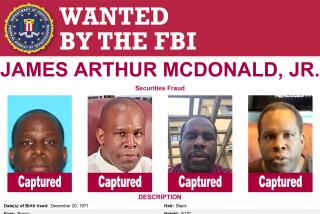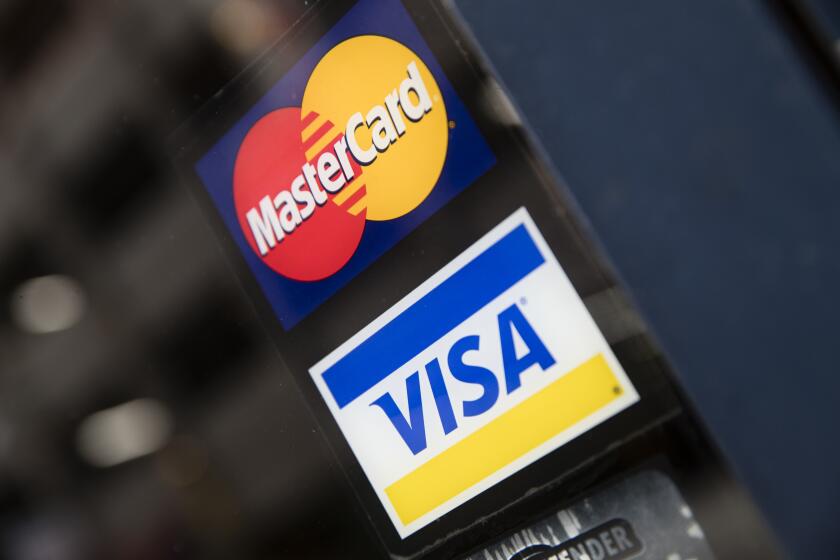Don’t trust JPMorgan chief’s spin machine
- Share via
In a rational world, a corporate chairman who presided over a huge unexpected loss would be raked over the coals at his next shareholder meeting and his job would be up for grabs.
It’s not likely that will happen to JPMorgan Chase Chairman and Chief Executive Jamie Dimon at the firm’s annual shareholder meeting today.
Partly that’s because “shareholder democracy” is a joke at almost all big companies. Dissident shareholders typically rejoice at getting a 40% backing for their proposals. At JPMorgan the only shareholder resolution on the ballot remotely critical of Dimon is one to divide the chairman and CEO jobs between two people; if the worst that happens is that it passes (not very likely), it would still rank as a mild penalty for Dimon, under the circumstances.
JPMorgan’s shareholders love Dimon for all the money he’s made for them over the years, and the bank’s $2-billion trading loss disclosed last week doesn’t cut materially into that total. That fact has been a key theme of the spinning Dimon has engaged in since the disclosure, including during an appearance Sunday in the comforting confines of NBC’s “Meet the Press.”
Dimon’s argument is that good companies are bound to make mistakes now and then, and as long as they own up to them and take their own steps to learn from the experience, everyone should move on. As it applies to this event, that’s a big, steaming platter of malarkey, and shareholders, regulators and the general public should push away from the table.
The proper way to think about JPMorgan’s fiasco is that it’s exactly the sort of thing that regulations should prevent banks from doing, lest they destroy the financial system — again.
On “Meet the Press,” Dimon paid lip service to the magnitude of the loss while assuring viewers that it isn’t “life-threatening” for his bank. But he can’t have it both ways. The loss was disclosed to securities analysts in a conference call scheduled on a half-hour’s notice last week. To say the loss won’t make the bank go out of business is irrelevant in terms of regulatory policy: Just because measles typically causes American kids only to break out in spots doesn’t mean we shouldn’t vaccinate against it. In an unguarded population, measles, like risky derivatives investments, can kill.
The most important question is what the trading loss says about the so-called Volcker rule, a federal proposal designed to forbid banks from making risky trades for their own books. During the conference call, Dimon shrugged that the only nexus between the trading loss and the Volcker rule is that the loss “plays into the hands of a bunch of pundits out there.” He sounded a bit like the CEO of a chemical company accused of poisoning an entire community grousing about his PR problem. The truth is that Wall Street has campaigned to eviscerate the Volcker rule so that it can continue conducting business as usual.
The rule aims to bar banks from risky “proprietary trading,” meaning trading strictly for their own account. There are indications that the loss-making transaction evolved over time into a proprietary trade. Leaving aside the sophistication of the transactions themselves, JPMorgan’s trader, a London-based derivatives expert whose portfolio was so outsized he became known in the markets as the London Whale, appears to have bet that corporate debt was becoming less risky as corporations were getting stronger — in trading parlance, he was long corporate debt. But he did so in a way that even a tiny hiccup in the index he was trading could be exploited by rival traders. And that’s what happened.
Dimon describes this trade as a “hedge.” Is it, though? First of all, a hedge reduces risk: If one investment might lose a lot of money when markets move in one direction, you create a hedge that will make money under those circumstances so your losses are limited.
Yet JPMorgan already is massively long corporate debt as a result of its normal course of business, which is lending money to corporations. A “hedge” that replicates that same position wouldn’t be a hedge at all. There’s speculation that the department where the Whale worked was, in fact, replicating Morgan’s real-life business of lending to corporations, but using fancy derivatives to do so — creating a “synthetic” bank, as traders would say, without actually lending to corporate customers as real banks do.
If that’s true, the question is why? To put it another way, if JPMorgan has more than $350 billion sitting around idle (the sum the Whale’s department appeared to have to play with), why not use it to do something that helps the economy — such as, you know, lending it to businesses? Instead, JPMorgan used the money to buy chips to play in the derivatives casino, which doesn’t help the economy one bit.
If this was a hedge, it looks like a “portfolio” hedge — that is, one not tied to any specific Morgan investment, but to a broader swath of its business. That’s something that drafters of the Volcker rule such as Sen. Carl Levin (D-Mich.) have particularly hoped to eradicate. As Levin wrote in February to the SEC and other regulators drafting the Volcker rule, “banks could easily use portfolio-based hedging to mask proprietary trading.”
But Wall Street has been determined to keep portfolio hedging immune from the Volcker rule — Dimon, who has placed his image as an earnest and thoughtful advocate of “sensible” regulation at the service of holding efforts at substantive regulation at bay, specifically said in his 2010 chairman’s letter to Morgan Chase shareholders, “if there must be more rules,” they need to allow portfolio hedging.
The most important fact exposed by the JPMorgan affair is that the computerized risk-management models devised to give traders confidence in their own prudence can always break down, whether because their math is inherently flawed or they fail to foresee the unforeseeable. That’s important to remember when bankers like Dimon portray such events as out-of-the-blue “mistakes” that can be guarded against in the future. The risk management expert Nassim Nicholas Taleb, author of the book “The Black Swan,” explained in 2008 that even when you rely on 30 years of risk models to tell you that a certain costly event is almost sure not to happen, the result is that you become so complacent that when it does happen, it can destroy you utterly.
The essence of Dimon’s defense is that JPMorgan still knows better than anyone else how to manage risk; it just happened to make a mistake this time. But what we now know is that JPMorgan doesn’t understand how to manage risk, because when multibillion-dollar bets are placed using inherently volatile and unpredictable financial devices, nobody does. JPMorgan’s own risk models showed that its exposure to loss had suddenly doubled in a period of weeks prior to its disclosure, which surely demonstrates that the models were useless from first to last. The conclusion that Dimon is desperate to avoid is that the only way to make this sort of risk-taking safe for the financial system is to make it illegal in the first place.
Michael Hiltzik’s column appears Sundays and Wednesdays. Reach him at mhiltzik@latimes.com, read past columns at latimes.com/hiltzik, check out facebook.com/hiltzik and follow @latimeshiltzik on Twitter.
More to Read
Inside the business of entertainment
The Wide Shot brings you news, analysis and insights on everything from streaming wars to production — and what it all means for the future.
You may occasionally receive promotional content from the Los Angeles Times.











